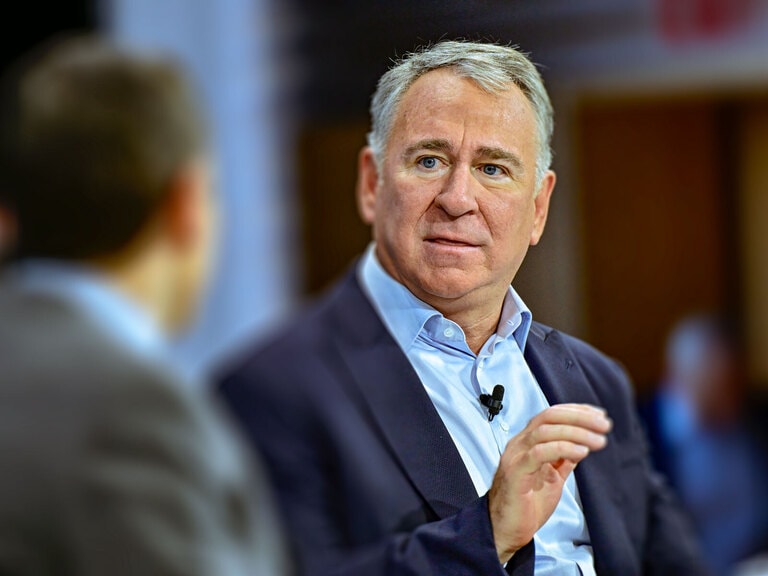Chief Investment Officer at third-party logistics company GXO Logistics [GXO], Mark Manduca, said in an interview with Opto, "Christmas is not being cancelled. Christmas is happening this year." And it's robots that will be saving the day.
From GXO's perspective, the logistics and supply chain problems— such as labour and container shortages — that several industries are facing would remain for some time, but the worst may be over.
"I think there are going to be problems that are very much driven by the fact that there's huge demand for [ecommerce], very little supply of airframes because very few people are flying," said Manduca. It is likely to take more than six months to resolve, said the GXO executive.
Wage inflation for the labour market started over a year ago and is here to stay, Manduca believes, and the subsidies and changed perspectives since the COVID-19 outbreak are leading people to be more selective about their work: "I actually view it very positively, which is, if ever there was a moment for differentiation, and being an employer of choice, now is that time."
“I think there are going to be problems that are very much driven by the fact that there's huge demand for [ecommerce], very little supply of airframes because very few people are flying” - Mark Manduca
For the logistics provider, however, wage inflation is not much of a concern because it is passed on to the customers. Sports apparel company Under Armour [UAA] recently said that supply chain was its most significant headwind going into 2022.
A growing business
GXO recently reported its September quarter results, with revenue of $2bn up 24.6% and net profit of $72mup 300% from the same period a year ago. However, the profit figures were not comparable, as the company recorded a $42m one-time tax write back. The GXO share price rose 2% after the company reported results.
More prominently in the quarter, GXO garnered $200m worth of contracts to be executed in 2022, which put its order book wins for the upcoming year at $700m. Manduca said the wins are split under three categories – first-time outsourced contracts accounted for 40% of the wins. These represent market expansion for the logistics sector. Existing customers increasing outsourcing to GXO accounted for 31% of fresh orders and, for the remaining 29%, GXO clawed into competitors' market share.
“There is a gravitation of this industry from the small 3PLs (third-party logistics players) to the scalable 3PLs” - Mark Manduca
"There is a gravitation of this industry from the small 3PLs (third-party logistics players) to the scalable 3PLs," Manduca said, adding that scalability included warehouse expertise, hiring capacity, and building relationships with global landowners.
Automation makes the difference
GXO is already 30% automated, while the sector as a whole is closer to 5%, leaving room for much more revenue growth opportunity for all logistics players, Manduca added. The robotic systems that make logistics more efficient with less human involvement include a variety of tasks to reduce the menial or repetitive activities within warehousing and delivery.
"It could be everything, from goods to person systems, vision technology in the warehouse to scanning systems."
Manduca is careful to point out that this is not a man-versus-machine moment. "This is people collaborating alongside robots to make the warehouse safe and amazing."
Manduca believes that GXO is positioned to win on all counts. For example, GXO's independence, compared with other competitors that are part of groups with vested interests, and its high technology and automation penetration allows the logistics operator to integrate seamlessly with the customers' hardware, software, and tools like labour management.
“It could be everything, from goods to person systems, vision technology in the warehouse to scanning systems” - Mark Manduca
Opportunity for logistics stocks
The billing model, too, is gravitating from a traditional labour-cost base to a strategy-based approach, said Manduca: "We've gone from a cost discussion to a revenue, inventory and reputational discussion, and that is why everything is gravitating towards the big 3PLs."
The industry has several tailwinds propelling it forward, Manduca said. First is the e-commerce ambition of many more retailers than ever before. The current e-commerce penetration is around 20% and rising quickly. With retailers eager to remove the bricks-and-mortar element from sales to reduce delivery, cycles the opportunity for logistics operators is huge.
Companies in the sector include Radiant Logistics [RLGT], Fedex [FDX], and UPS [UPS].
Continue reading for FREE
- Includes free newsletter updates, unsubscribe anytime. Privacy policy





